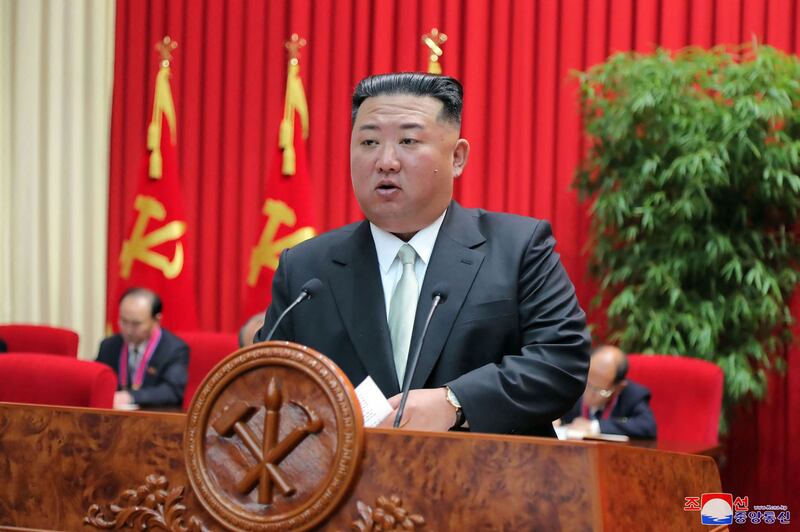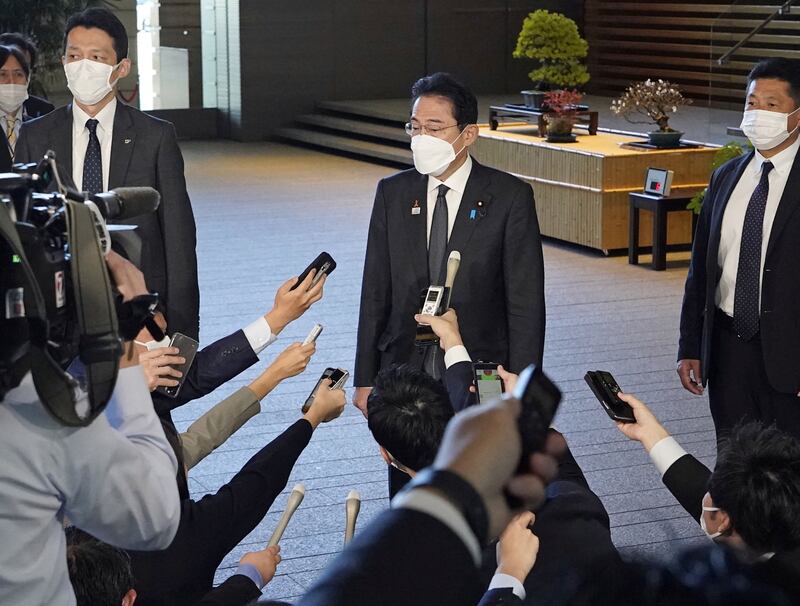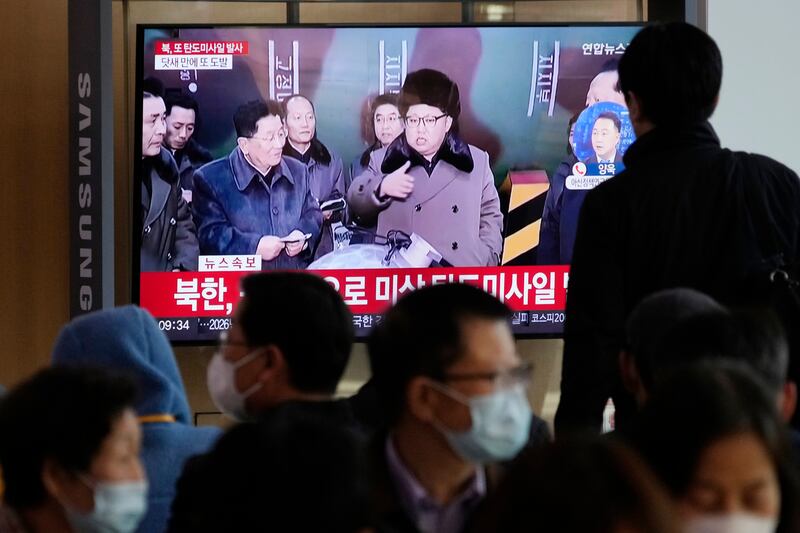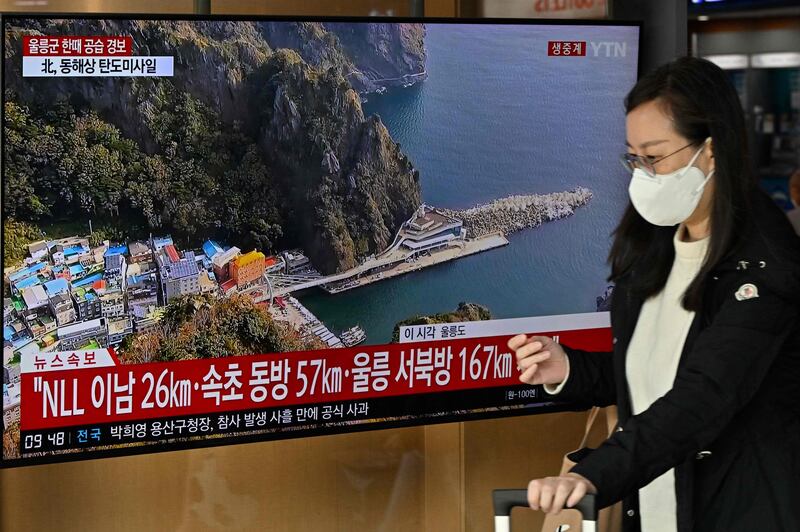A North Korean missile test on Friday shows its warheads could reach the continental US, Japan's defence minister has said.
North Korea launched what is believed to be an intercontinental ballistic missile, which landed inside Japan's exclusive economic zone, about 200km west of Oshima-Oshima island off Hokkaido on Friday.
Japanese Defence Minister Yasukazu Hamada told reporters that the ICBM flew 1,000km at a maximum altitude of about 6,000km. He said the altitude suggests its was launched at a high angle.
He said that, depending on the weight of a warhead to be placed on the missile, the weapon has a range exceeding 15,000km, “in which case it could cover the entire mainland United States”.
The US's National Security Council said the country strongly condemned North Korea for its test of a long-range ballistic missile.
Spokeswoman Adrienne Watson said: “This launch is a brazen violation of multiple UN Security Council resolutions and needlessly raises tensions and risks destabilising the security situation in the region.
“This action demonstrates that the DPRK [North Korea] continues to prioritise its unlawful weapons of mass destruction and ballistic missile programmes over the well-being of its people. We urge all countries to condemn these violations and call on the DPRK to come to the table for serious negotiations. The door has not closed on diplomacy, but Pyongyang must immediately cease its destabilising actions and instead choose diplomatic engagement.
“The United States will take all necessary measures to ensure the security of the American homeland and Republic of Korea and Japanese allies.”
The launch was the second such major weapons test this month that shows its determination to perfect weapons systems targeting the US mainland. It was the latest in a barrage of weapons tests that North Korea has conducted in recent months in response to what it calls US hostility.
Some experts say the North is able to perform such a spree of weapons tests partly because China and Russia have opposed US moves to toughen sanctions on North Korea.
The South’s Joint Chiefs of Staff said they had detected the suspected ICBM launch from the region of North Korea’s capital at 10.15am and the weapon flew towards the North’s eastern coast across the country. The statement said South Korea’s military had bolstered its surveillance of North Korea and maintains readiness in close co-ordination with the US.
The Japanese Defence Ministry also initially identified the weapon as an ICBM-class ballistic missile. Japanese Prime Minister Fumio Kishida, visiting Bangkok to attend a regional summit, told reporters it was believed to have landed at sea inside Japan’s exclusive economic zone west of Hokkaido, Japan’s main northern island.
If confirmed, it would be North Korea’s first ICBM launch in about two weeks. Experts said an ICBM launched by North Korea on November 3 failed to reach its intended flight and fell into the ocean after a stage separation.
The test was believed to have involved a developmental ICBM called Hwasong-17. North Korea has two other types of ICBM — Hwasong-14 and Hwasong-15 — and their test-launches in 2017 proved they could reach parts of the US homeland.
The Hwasong-17 has a longer potential range than the others and its huge size suggests it’s designed to carry multiple nuclear warheads to defeat missile defence systems. Some experts say the November 3 test showed some technological progress in the development of the Hwasong-17, given that in its earlier test in March, the missile exploded soon after lift-off.
“North Korea has been repeatedly firing missiles this year at an unprecedented frequency and is significantly escalating tensions on the Korean Peninsula,” Mr Hamada told reporters.
South Korea’s presidential office said it convened an emergency security meeting to discuss the North Korean launch.
North Korea had halted weapons launches for about a week before it fired a short-range ballistic missile on Thursday.













